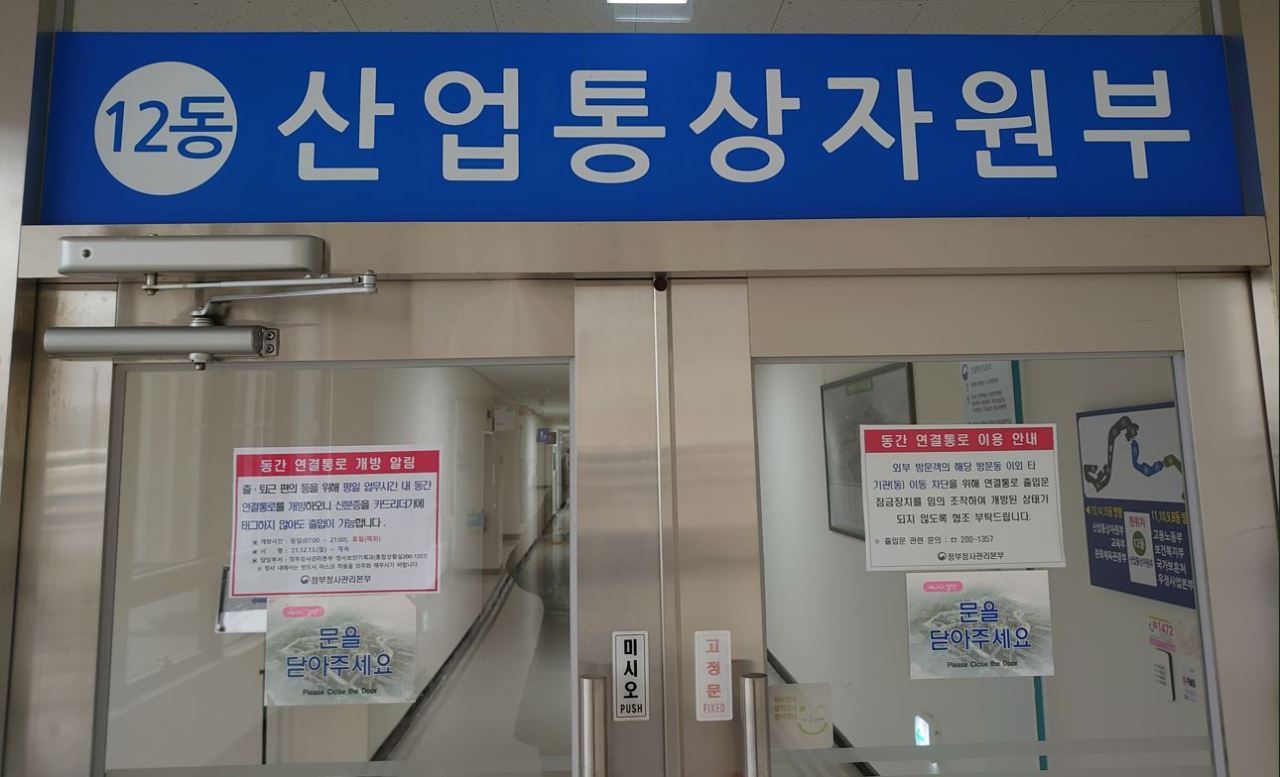Market Now
Korea suffers all-time high trade deficit in 1st half
 |
The Ministry of Trade, Industry and Energy at Government Complex Sejong (The Korea Herald) |
SEJONG -- South Korea posted a record-high trade deficit during the first half of 2022 in the wake of a spike in import prices of raw materials, state data showed Friday.
According to the Ministry of Trade, Industry and Energy, the nation’s exports recorded $350.3 billion during the January-June period, up 15.6 percent compared to the corresponding period of 2021. Imports increased by 26.2 percent on-year to post $360.6 billion.
This brought about a trade deficit of $10.3 billion, which marked an all-time high, exceeding the former high of $9.1 billion, posted in 1997, when the Asian currency crisis hit the nation.
Energy-related products led the surge in imports. Inbound shipments of crude surged by 207.1 percent on-year, liquefied natural gas by 114.9 percent and coal by 88.1 percent.
Import prices of Dubai crude rose from $63.5 per barrel in the first half of 2021 to $101.8 in the first half of 2022. Prices of coal from Australia shot up from $91.8 to $319 per metric ton.
While prices of other raw materials like steel surged, global inflation in agricultural products such as wheat and corn contributed to the nation’s trade deficit, said the ministry.
The situation comes amid global economic normalization from the COVID-19 pandemic as well as the prolonged war between Ukraine and Russia.
Nonetheless, exports were brisk in the period. The figure of $350.3 billion marked the highest on the comparison of each half-year in history. The former record high was $341.3 billion, posted in the second half of 2021.
Daily average exports also hit an all-time high of $2.62 billion on the basis of comparison of each half-year.
Outbound shipments of petroleum products increased by 89.3 percent on-year, computers by 35.1 percent, steel by 26.9 percent, semiconductors by 20.8 percent and petrochemical products by 16 percent.
A 13.2 percent increase was reported in exports of mobile telecommunications products, 6.3 percent in home appliances, 5.8 percent in textiles and 3.2 percent in automobiles.
First-half exports of agricultural products also remained brisk, increasing for the seventh consecutive year.
By destination, shipments of overall products to China increased by 6.9 percent, the Association of Southeast Asian Nations by 31.8 percent, the Unites States by 18.2 percent, the European Union by 8.2 percent and Japan by 12 percent.
“It is time to take full-fledged countermeasures against risks surrounding our industries and trade, given the widening trade deficit from (globally) expanded demand for energy and spiraling oil prices,” Industry Minister Lee Chang-yang said on Friday in a statement.
By Kim Yon-se (kys@heraldcorp.com)







![[Contribution] Preparing for future with strategic public procurement](http://res.heraldm.com/phpwas/restmb_idxmake.php?idx=151&simg=/content/image/2024/11/29/20241129050037_0.jpg)
